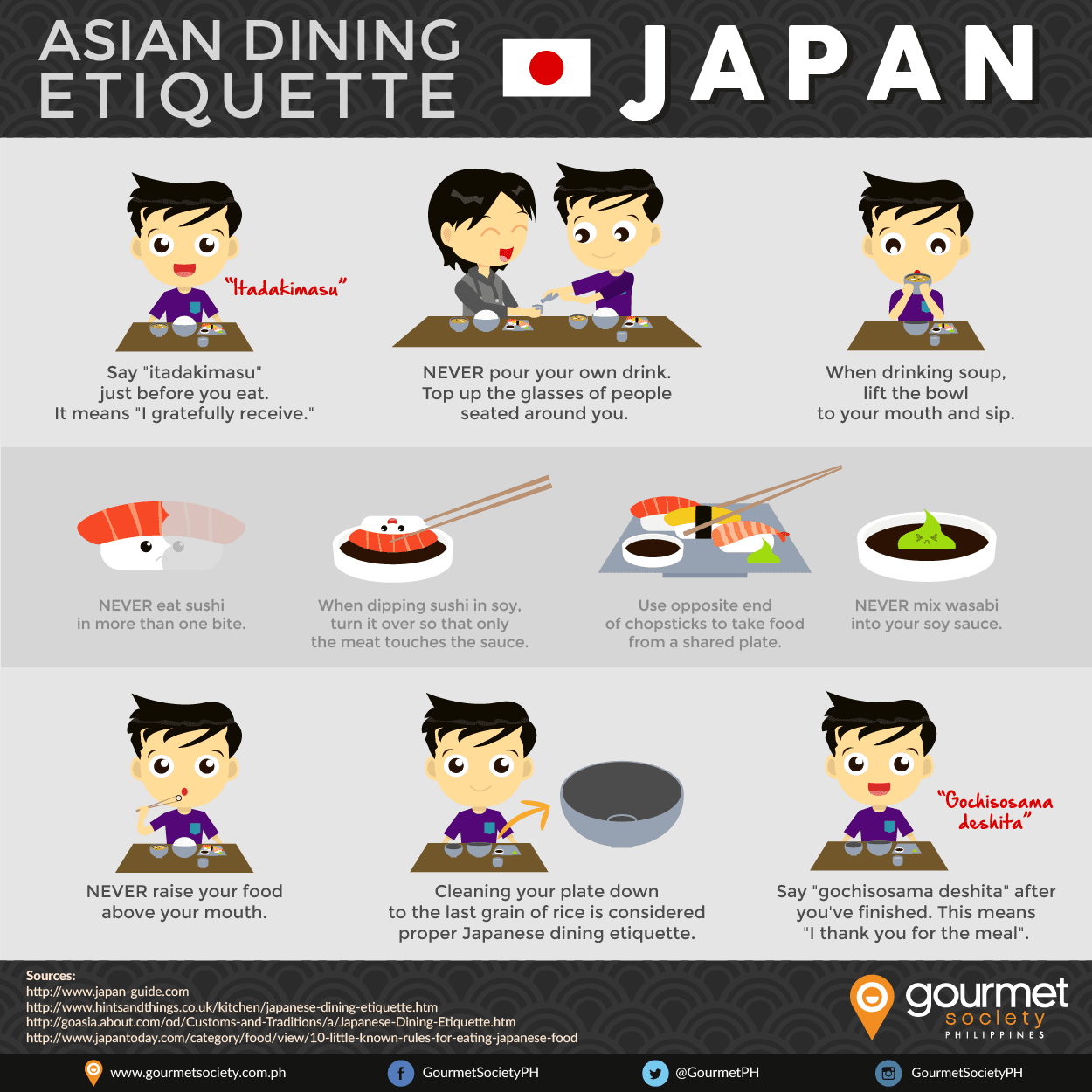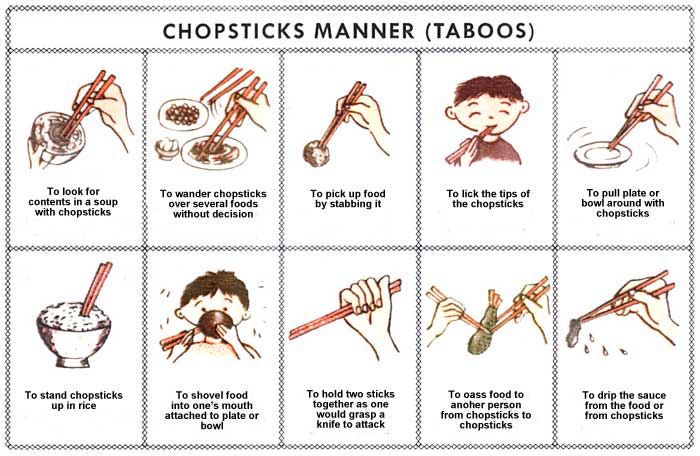Asian Dining Tips: A Guide to Etiquette and Traditions
Dining in Asia is not just about the food; it’s about the experience, the culture, and the customs that make each meal a memorable occasion. Whether you’re enjoying a traditional meal in Japan, indulging in Chinese delicacies, or savoring the flavors of India, understanding the dining etiquette and cultural practices can enhance your experience. This article will provide you with essential Asian dining tips, covering everything from chopstick etiquette to the do’s and don’ts at the dinner table.

Understanding the Importance of Dining Etiquette in Asia
Dining etiquette is deeply ingrained in many Asian cultures. The way you eat, interact with others at the table, and respect the food are all considered vital. In countries like Japan, China, Korea, and India, your dining behavior can reflect your respect for tradition and the people you’re sharing the meal with.
Key Elements of Asian Dining Etiquette
-
Respect for the Elderly: In many Asian cultures, it’s customary to show respect to elders during meals. This might include waiting for the eldest person to start eating first or offering them the best portions of food.
-
Sharing Dishes: In countries like China and Thailand, meals are often served family-style, where dishes are shared among everyone at the table. It’s important to serve yourself modestly and wait for others to serve themselves first.
-
Politeness is Key: Speaking in a polite and respectful tone during meals is essential. Whether it’s using the proper honorifics in Japan or avoiding slurping your food in Korea, manners matter.
Chopstick Etiquette: Do’s and Don’ts
Using chopsticks can be a challenge for some, but in many Asian countries, it’s a crucial part of the dining experience. Understanding chopstick etiquette is important in ensuring you don’t make any inadvertent cultural mistakes.
Do’s of Chopstick Etiquette
-
Hold them properly: Keep your chopsticks parallel and use them to pick up food gently. Practice using them before attending a formal dinner to avoid awkwardness.
-
Resting your chopsticks: When not in use, place your chopsticks on a chopstick rest or across the edge of your plate. Avoid leaving them upright in your rice bowl, as this resembles a funeral custom.
-
Use them to serve others: In family-style dining, use your chopsticks to serve food to others, especially to elders or guests.

Don’ts of Chopstick Etiquette
-
Don’t stick them upright in your rice: This is considered very rude and is associated with death rituals.
-
Avoid pointing: Don’t point or gesture with your chopsticks as this can be seen as impolite.
-
Don’t pass food directly: Passing food from one person’s chopsticks to another’s is considered a taboo, as it mirrors a funeral custom.
Table Etiquette in Different Asian Countries
1. Japanese Dining Etiquette
In Japan, dining is an art form, and every step follows a set of established practices. Respect for food and others is central to the dining experience.
-
Slurping Noodles: In Japan, slurping noodles is not only acceptable but also encouraged. It’s believed to enhance the flavor and show appreciation for the food.
-
Rice Bowls: Hold your rice bowl close to your mouth when eating, and don’t leave any rice behind. This shows respect for the food.
-
Pouring Drinks: If you’re dining with others, it’s polite to pour drinks for your companions before filling your own glass.

2. Chinese Dining Etiquette
Chinese meals are often a communal affair, and there are several rules to keep in mind when dining.
-
The Right Way to Use Chopsticks: Avoid sticking chopsticks into the rice and instead place them neatly on the table or on a rest.
-
Tapping the Table: If you receive a drink from someone, it’s customary to tap your fingers on the table as a sign of gratitude. This comes from a tradition of showing respect to your host.
-
Respecting the Host: When dining with a Chinese host, wait for them to start eating before you begin.
3. Indian Dining Etiquette
In India, food plays a significant role in social gatherings, and there are several cultural norms to follow.
-
Eating with Hands: In many parts of India, eating with your right hand is considered proper etiquette. The left hand is traditionally used for personal hygiene and should not be used for eating.
-
Sharing Food: It’s common to share food with others, especially during festive occasions or family meals.
-
Respect for Elders: As in many other cultures, respect for elders is crucial. Always serve them first, and ensure they have what they need during the meal.

The Importance of Timing and Seating
Seating Arrangement
In most Asian cultures, seating arrangements at the dining table have a special meaning. The seating is typically arranged based on seniority and respect. In China and Japan, the most honored guest is seated farthest from the door, while in Korea, the eldest person sits at the head of the table.
Timing is Everything
In many Asian countries, meals are often structured around specific times of the day, and showing up late or too early can be seen as inconsiderate.
-
Breakfast: In Japan, breakfast is typically a lighter meal, while in India, it’s often more substantial, with dishes like paratha or idli.
-
Lunch and Dinner: These meals are usually larger and shared among family or friends. In China, dinner is often the most important meal of the day.
Common Dining Mistakes to Avoid
When dining in Asia, it’s easy to make a mistake, especially if you’re unfamiliar with the culture. Here are some common dining mistakes to avoid:
-
Overusing Condiments: In many Asian cultures, condiments like soy sauce and chili paste are used sparingly. Don’t overdo it, as it can overwhelm the natural flavors of the dish.
-
Not Finishing Your Plate: While it’s common to leave a little food on your plate in some Western cultures, in Asia, it’s generally considered wasteful to leave food behind. Always try to finish what you’ve been given.
-
Making Noise: While slurping noodles is acceptable in Japan, making other loud noises like talking with your mouth full or loudly chewing can be seen as disrespectful.
FAQs on Asian Dining Etiquette
1. Is it okay to tip at Asian restaurants?
In countries like Japan, tipping is not customary and can even be considered rude. In contrast, some countries like Thailand and Vietnam may accept tips but don’t expect them.
2. Can I use my phone at the dining table?
It’s generally considered disrespectful to use your phone while dining in many Asian cultures. Focus on the food and the company around you.
3. What should I do if I don’t like the food?
If you don’t like a particular dish, it’s polite to not make any negative comments. You can try to eat small portions or leave it discreetly on the side of your plate.
4. How can I prepare for a formal Asian dinner?
Learn the basic etiquette of the country you’re dining with, such as chopstick use, seating arrangements, and meal timing. It’s always a good idea to arrive on time and show respect to the host.
Conclusion
Dining in Asia is a deeply cultural experience that involves much more than just eating. From the respectful use of chopsticks to understanding seating arrangements, following the right etiquette can make your dining experience much more enjoyable. Whether you’re in a small local restaurant or attending a formal dinner, being aware of these Asian dining tips will help you navigate the meal with confidence. Embrace the diversity and traditions of Asian cultures, and you’ll not only enjoy the food but also gain a deeper appreciation for the people and customs that make these meals so special.
This article is brought to you by DUYTHIN.DIGITAL, your trusted partner for automation tools for Facebook, Zalo, Telegram, Google SEO, TikTok, and more. Let us help you streamline your digital processes today!




